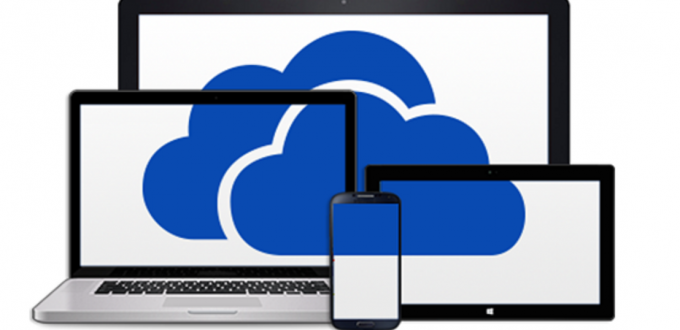You are here
Cruise on Over to OneDrive

The University is in the planning process for migrating from Box to OneDrive. Pitt IT will provide additional information about migrating to Microsoft OneDrive for personal cloud storage as the project moves forward. In the meantime, whether you’re new to OneDrive or have been using it for ages, here are some neat features to make the most of working in the cloud!
1. Easy File and Folder Sharing
OneDrive gives you many ways to share files, for whatever need you may have. You can share a file from the Microsoft 365 web app, from your computer’s File Explorer, by email, or even post it on a social network page. You can also upload it to a SharePoint or Teams site.
There are several permission levels in OneDrive, depending on how you share it. Sharing can be done by giving someone direct access or by creating a share link. When you share with direct access, you can give someone permission to either View or View and Edit.
When you share a file by creating a link to it, you decide who can access it and whether they can view only or edit it. You can even create a Public link that works for anyone. If you would like to monitor who has been editing a file, you can set an option that requires users to log in first.
2. Simultaneous Viewing, Commenting, and Editing
On OneDrive, users with access to your shared files can comment on them (commenting doesn’t require editing rights). Users who comment on your files will have their profile pic displayed beside their comments. It’s a great way to get feedback from a group right in the document itself, without a giant email chain or a separate discussion thread.
OneDrive also allows collaborators to edit documents simultaneously using the desktop app, mobile app, or online versions of an associated Office program. If two people are working on a document at the same time, a small popup will appear to notify you when a change has been made by a collaborator. You will be prompted to click ‘Save’ to view the edited section, which is highlighted with name of the person who made the change. This ensures that you’re all working on the same version of the document in real time, without one poor person having to reconcile and integrate everyone’s individual comments.
3. Automatically Sync Microsoft 365 Files to OneDrive
OneDrive is fully integrated with Microsoft 365. There’s no need to install separate apps or add-ons to make Word, Excel, PowerPoint, or other Microsoft 365 apps coordinate with or work in OneDrive. Files sync with your OneDrive account automatically (if you’re connected to the Internet), which conveniently lets you access them from any device. There is also the option to sync only selected files to OneDrive.
You can even save your OneNote notes and to-do lists to OneDrive. If you want to email the note to someone else from OneDrive, it is converted into a text format (with pictures and checkboxes included) that anyone—and any email program—can open.
4. Delete-Proof Editing with the Recycle Bin and Version History
If you happen to accidentally delete a file, OneDrive stores it in the recycle bin, found at the bottom left corner of the web app. This can be a lifesaver! Items in the recycle bin remain available for 30 days. If the recycle bin exceeds 10% of your total 5 TB storage limit (i.e., 500 GB), the oldest item will be deleted if it has been there for at least 3 days.
OneDrive also automatically keeps the last 25 sets of changes to your document in Version History, which lets you view or revert to a previous version or track down precisely when a change was made. The Version History is updated after each successful file sync. To see a file’s version history, just right-click on a file and click Version History. From there, you can Open a previous version as a separate document or Restore a previous version to make it the current version.
While Version History is useful, you should use Save As to create a separate file if you know you want to keep an old version of a document. Microsoft 365 apps autosave and sync every few minutes, so the version history will max out if you are making a lot of changes.
Get Ready for OneDrive
OneDrive is an excellent cloud service for Pitt students, faculty, and staff. If you are currently using Box, you don’t need to transfer your files to OneDrive. Pitt IT will do that for you during the migration process. You’ll get an email when your migration is scheduled, so you will know when it will happen.
In the meantime, you can start preparing for the migration by using OneDrive now for storing new files. That way, those files won’t need to be transferred and you’ll become more familiar with OneDrive. In addition, if you have files in Box that you no longer need, delete them to speed up the transfer of your files. If you have shared permissions for files or folders in Box that you no longer need to access, remove yourself from the permissions list for that asset.
Learn more about OneDrive and the Box-to-OneDrive migration at technology.pitt.edu/cloud-migration-pitt.
-- By Karen Beaudway, Pitt IT Blogger